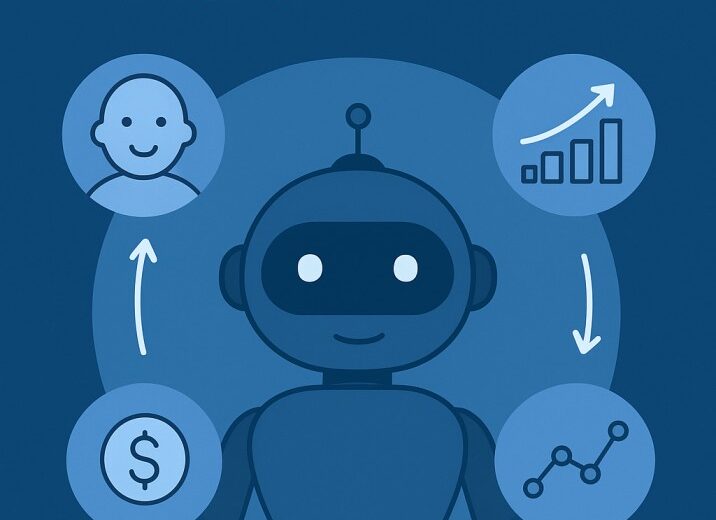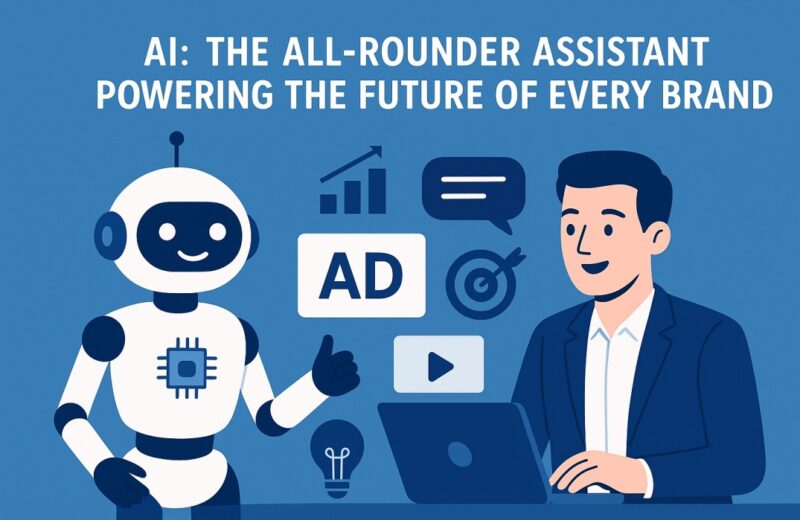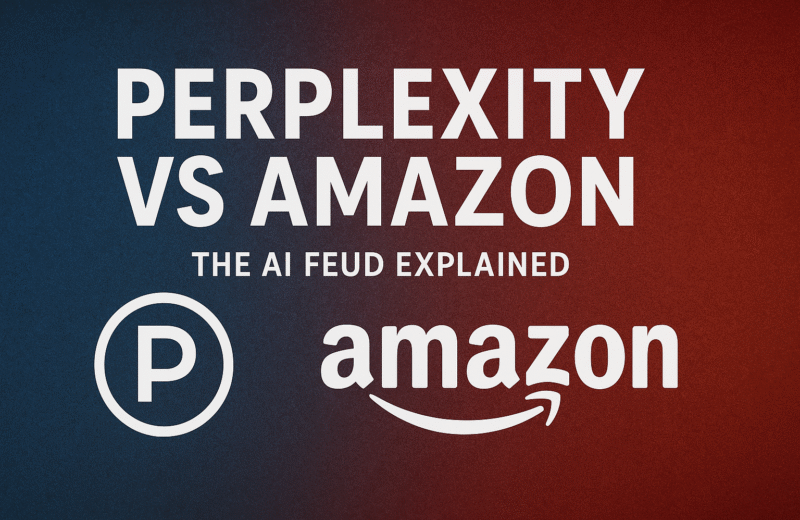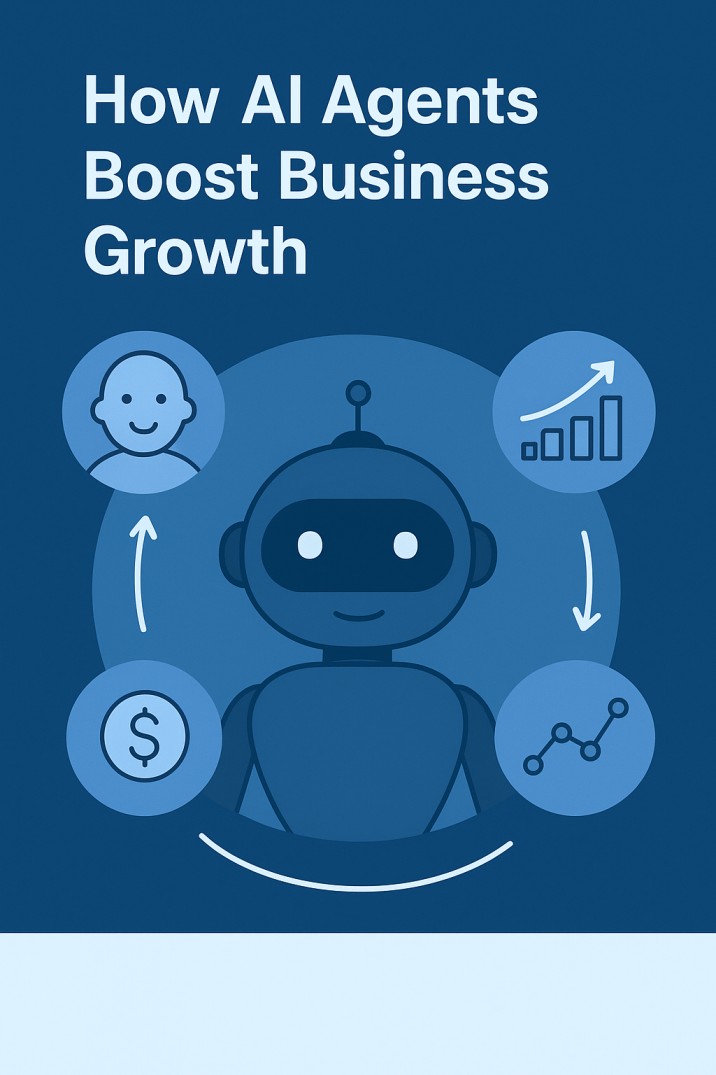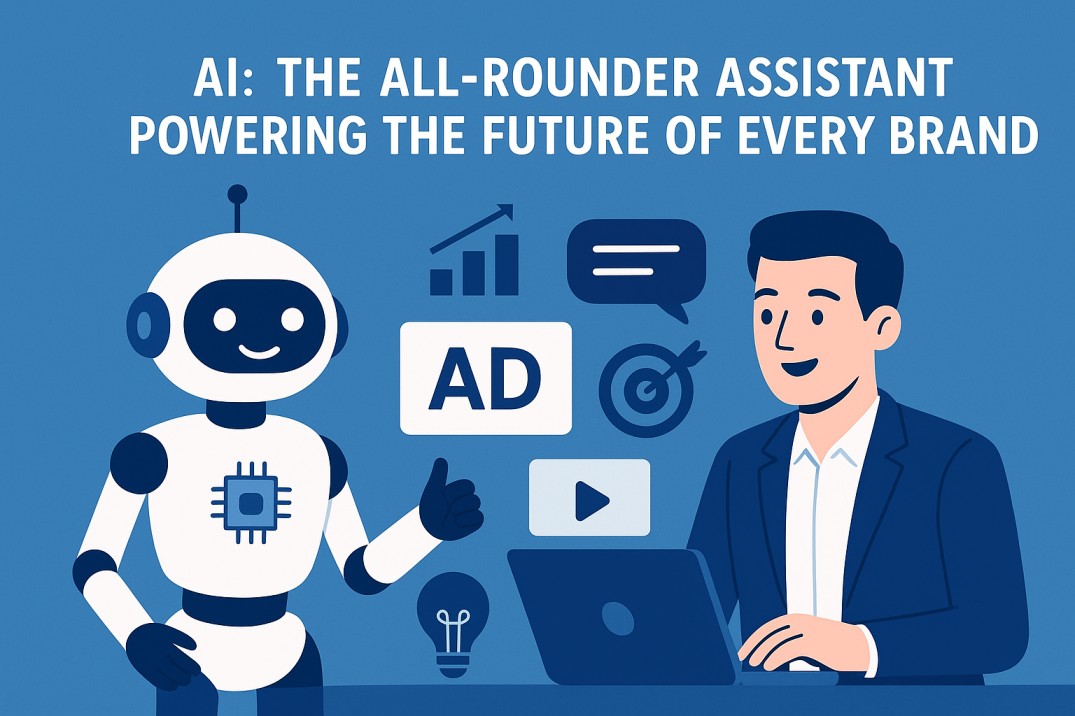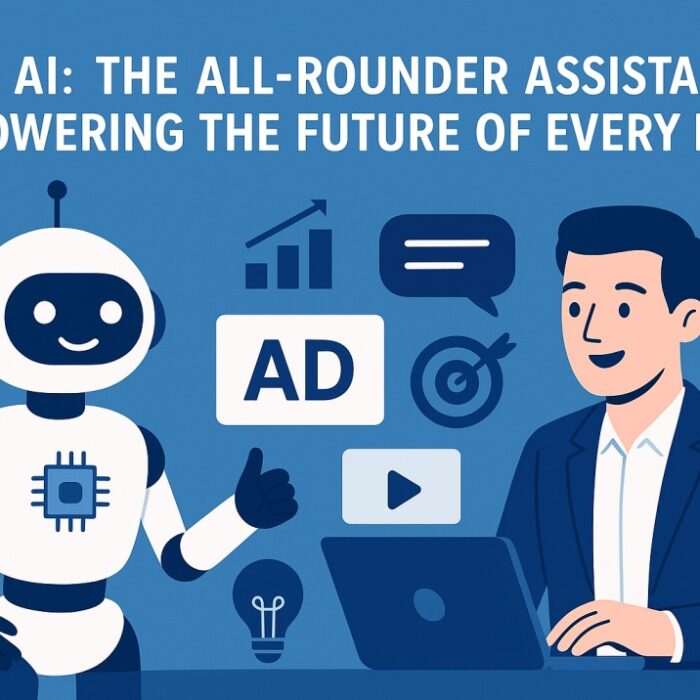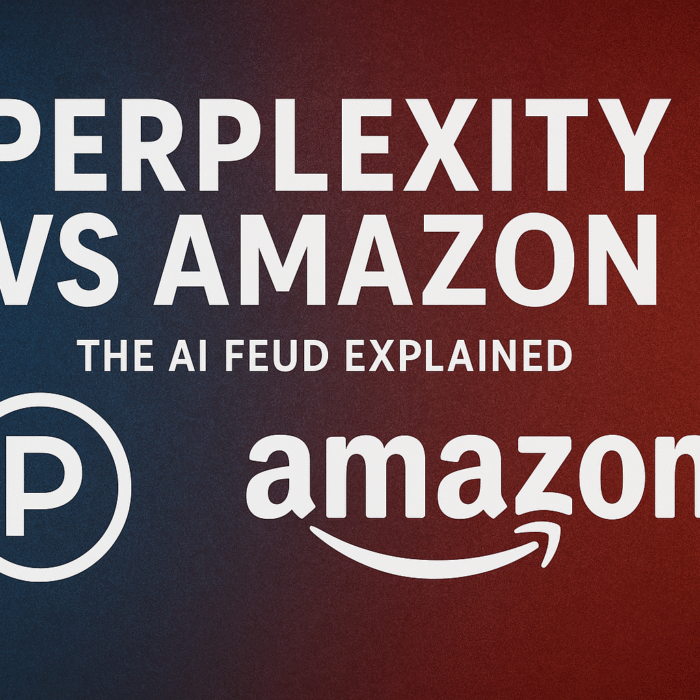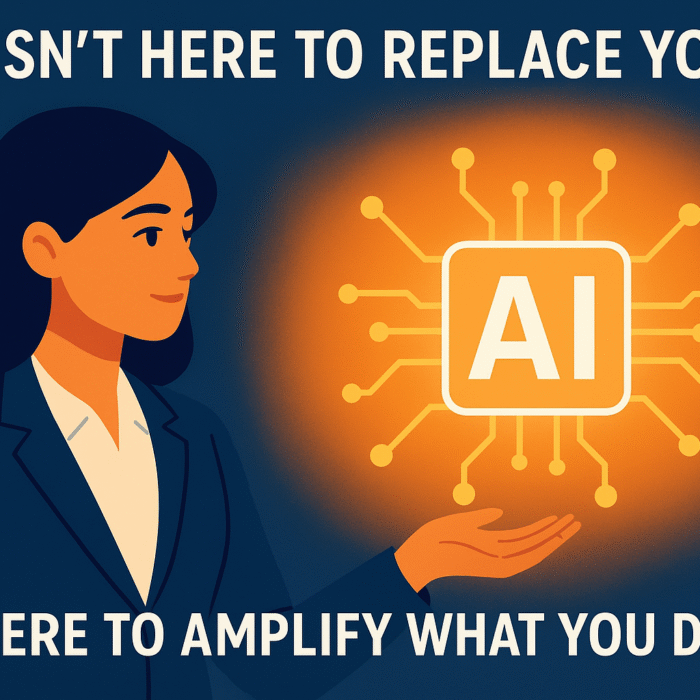In a bold move, Grammarly has announced that it will rebrand the company under the name Superhuman, and launch a new agentic AI assistant called Superhuman Go. (Gadgets 360)
This is more than just a new logo or corporate identity. It signals a shift in how writing tools and productivity assistants think about support, agency, and the user experience. For those of us working in AI, this shift holds important implications.
From Grammarly to Superhuman: The Evolution of Agentic AI
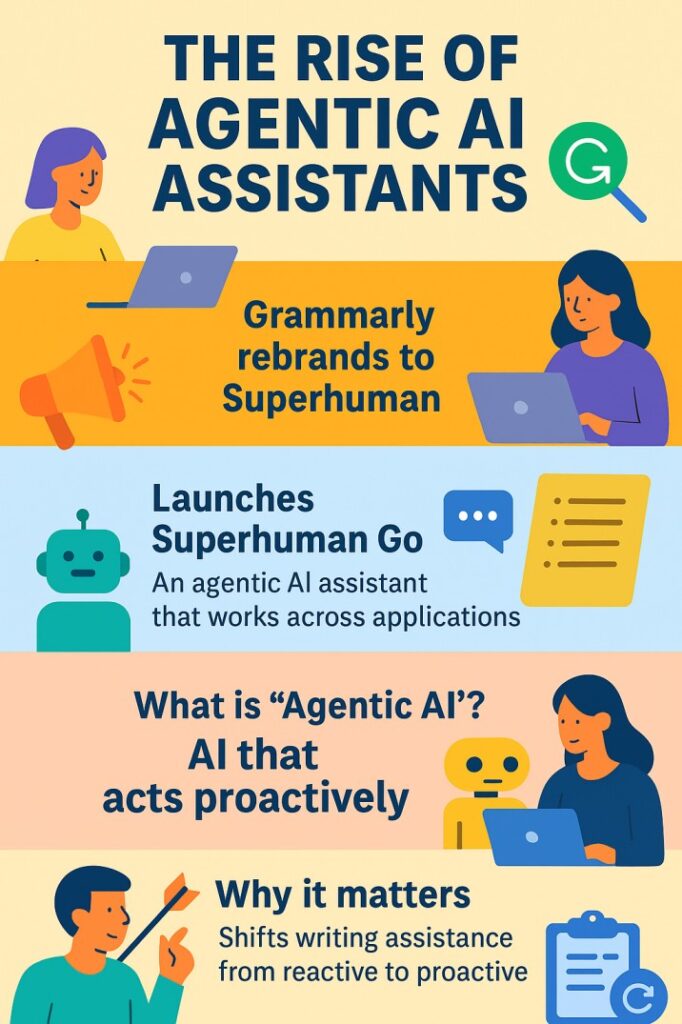
Grammarly has long been recognised as a writing assistant, helping users correct grammar, improve clarity, refine tone. Under the hood, though, the company has been evolving. Earlier this year, Grammarly acquired Coda and later acquired Superhuman Mail. So the re-brand to Superhuman is not a cosmetic change but a statement of strategic direction. The company is positioning itself not just as a writing tool but as a broader AI-powered productivity platform.
The article points out that while the product “Grammarly” will still exist by that name, the parent company will now be “Superhuman.” The new portfolio under Superhuman includes: Grammarly (writing), Coda (productivity platform), Superhuman Mail (email), and now Superhuman Go (the agentic AI assistant).
What Is “Agentic AI” and Why It Matters
Superhuman’s new product launch is Superhuman Go, described as an agentic AI assistant “that works in every application and tab” and which not only offers writing assistance, auto-drafts, summarisation, and more, but proactively assists users by tapping into different knowledge hubs to complete tasks.
Agentic AI here means a tool that doesn’t just wait for commands but acts in context: it can look at your email, your calendar, your Slack conversation, infer what you might need, and step in to help. For example, if someone on Slack asks for a meeting tomorrow, Superhuman Go might check your calendar and propose available slots inline. Or it might draft an email by finding the right phrasing.
Why is this significant? Because it changes the paradigm of “writing assistance” from reactive to proactive. Instead of the user always initiating the improvement process, the tool becomes a collaborator. For agencies, educators, or non-profits focused on empowerment through writing, communication or productivity, this opens new opportunities.
Let’s reflect on how this shift is relevant to us. Suppose our cause is fostering digital literacy, helping students or community members express themselves, or building writing confidence in underserved groups. The evolution of tools like Superhuman suggests several opportunities and responsibilities:
1. Lowering the barrier to expression
Writing confidently and clearly is a key part of empowerment. Tools that assist not only with grammar but diagnosis of tone, structure, context, and suggesting proactive help mean that users who may feel less confident get more support. Our work helps people find their voice; such tools amplify that support.
2. Democratizing professional-grade productivity
Many productivity tools remain geared toward enterprise professionals. By rebranding and expanding into agentic AI that works across contexts, Superhuman signals a desire to make sophisticated assistance more widely available. For our cause of expanding access, this is good: it means more people could benefit from the same kinds of assistance formerly reserved for professionals.
3. Ethical and human-centred design implications
As tools become more proactive and context aware they raise questions: Who controls the data the agent uses (emails, calendars, etc)? How transparent is the assistance? For our cause, which likely emphasises trust, accessibility and fairness, this is a moment to advocate for user-centric design, meaningful consent, and empowerment rather than replacement.
4. Changing the role of the writing coach, mentor, or educator
If AI can detect a suggestion, draft an email, and summarise a thread, we as coaches or educators must rethink how we support learners. Our role may shift from “fixing mistakes” to “teaching strategic communication”, helping interpret suggestions, and building meta-skills. Tools can augment, not replace, the human connection that matters in our cause.
What Could The Era of Agentic AI Catalyse?
The rebrand and launch by Superhuman is not just about one company. It is emblematic of a broader trend: writing and communication assistants becoming more integrated into our daily workflows, more proactive, more connected. Here are some future implications we need to watch:
Writing as workflow, not after-thought
Instead of writing being a discrete activity (compose email, proofread, send), writing will increasingly be embedded within context (Slack, calendar, CRM, scheduling). Tools will suggest drafts, actions, next steps. For our cause, this means preparing learners to think of writing less as “one tool” and more as part of continuous communication workflow.
Collaboration between human and AI
The future will involve human-AI collaboration: humans bring vision, voice, intent; AI brings speed, data-access, pattern detection. We must emphasise that learners stay in the driver’s seat and use AI‐tools as co-pilots. Tools should democratise voice rather than replace human agency.
Multilingual, cross-cultural implications
Many writing assistants have been English-first. As agentic AI grows, we need to advocate for tools that support regional languages, dialects, and contextually appropriate communication norms. In our cause of inclusive literacy, this is a key priority.
Ethical, accessible and inclusive design
We should hold ourselves and our partners accountable to ensure that emerging tools don’t create new digital divides. That means: affordability; offline or low-connectivity modes; language support; accessibility for neurodiverse learners; privacy and consent built-in.
A Call to Action for Our Community
Given all of this, what can we ask of our community, learners, educators, partners, and supporters?
- Explore but question
Encourage learners to explore tools like Superhuman Go (and other emerging AI writing assistants), but question how they work. Ask: What data does this tool access? What suggestions is it making and why? What might it miss? This builds critical digital literacy. - Teach writing strategy not just mechanics
Even as AI aids more of mechanics and structure, the human skill of audience awareness, persuasion, story-telling, voice remains essential. In our programs we should emphasise these higher-level skills so learners can make the most of AI-tools rather than being passive users. - Partner with tool-providers for access
We might explore partnerships or licensing with writing-assistant companies to make agentic tools more accessible to our learners. Or advocate for discounted/free versions for underserved communities. The Superhuman rebrand signals potential movement in the space. - Build awareness of data and ethics
We should organise workshops or modules on “Writing with AI responsibly”. Topics: data consent, privacy, avoiding plagiarism, maintaining authenticity, recognising bias in AI suggestions. These will become increasingly important as tools become more integrated and “agentic”. - Innovate with local languages and contexts
Because our cause emphasises regional inclusion, we must actively pursue tools and pedagogies that support not only English but local languages, regional writing forms, context-specific communication. We can pilot local-language writing tools, build translation layers, and adapt AI writing assistance to our audience.
Seizing the Moment for AI Agents
The rebranding of Grammarly to Superhuman and the launch of Superhuman Go represent a significant moment in the evolution of writing assistance and productivity AI.
We have an opportunity to integrate smarter tools, deepen our teaching of writing and communication skills, democratise access, and lead on the ethical, inclusive adoption of AI-writing assistants. At the same time we must remain vigilant to ensure these tools serve our mission of empowerment rather than exacerbate inequities.
In essence: the future of writing and communication is becoming more collaborative between human and AI. We should embrace that future, but steer it in the direction of equity, access, voice, and agency. Our learners deserve nothing less.
Let’s use this rebrand as a moment to reflect, adapt, and innovate. Together, we can ensure that as writing assistance tools become more “super-human”, our mission becomes more deeply human.








